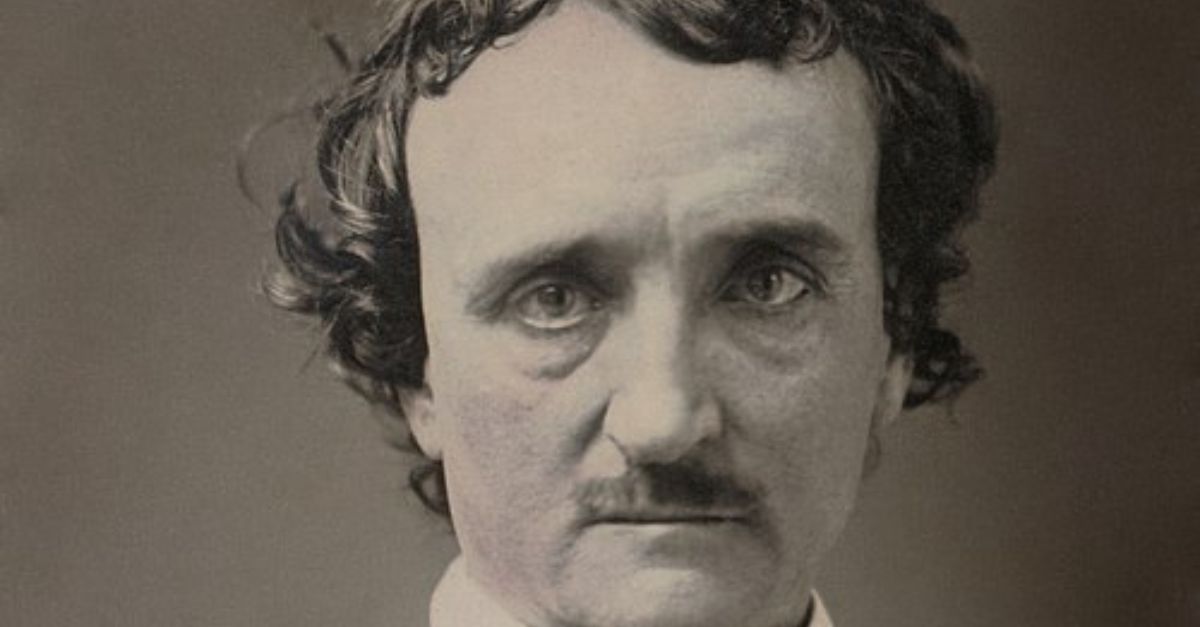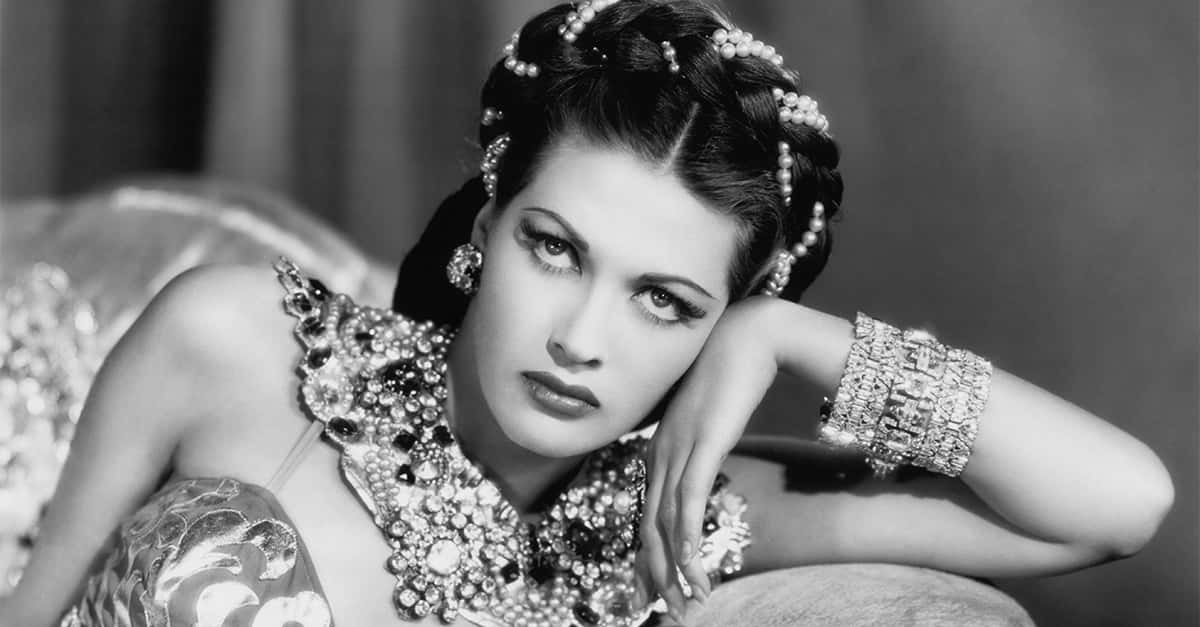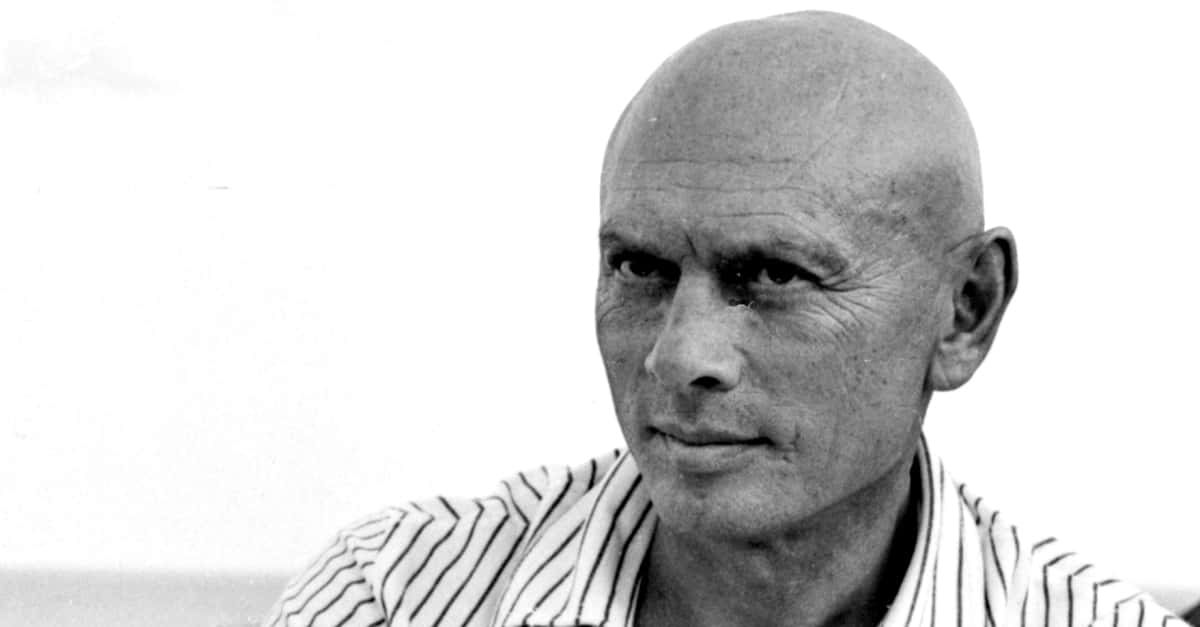When Darkness Followed A Brilliant Mind
Edgar Allan Poe is famous for poems and stories that scare and fascinate readers. But Poe's own life had disturbing truths: unexplained deaths and strange events that turned his everyday reality into a living nightmare.
Poe Was Orphaned Before Age Three In Richmond
Edgar Allan Poe lost both parents before turning three. Poe's mother succumbed to tuberculosis in Richmond in 1811, most likely within her home. His father had vanished earlier, possibly dying soon after. Poe was left in the care of a wealthy merchant family.
 Unknown. Probably a photo of a lithograph., Wikimedia Commons
Unknown. Probably a photo of a lithograph., Wikimedia Commons
His Foster Father Rejected Him Repeatedly Despite His Wealth
John Allan took Poe into his home but never formally adopted him. Their relationship soured over Poe's literary ambitions and Allan's controlling nature. Although Allan was wealthy, he refused to support Poe financially during his college years, which forced Poe into debt and led to a permanent estrangement.
Poe's Foster Mother Died While He Was Serving In The Army
Frances Allan passed away in 1829 while Poe was serving in the army. No one informed him until it was too late to return. Her death struck him hard and further severed his already strained relationship with John Allan by deepening the emotional isolation Poe carried forward.
 Robert M. Sully, Wikimedia Commons
Robert M. Sully, Wikimedia Commons
Family Illness Surrounded Him From Childhood To Death
The slow deaths of loved ones marked Poe's life. His mother and wife both passed away from tuberculosis. Illness and mourning weren't distant subjects; they filled his home. This constant exposure seeped into his work and haunted his imagination.
 Unknown authorUnknown author, Wikimedia Commons
Unknown authorUnknown author, Wikimedia Commons
He Watched Multiple Women Die Of Tuberculosis
Virginia Clemm began showing tuberculosis symptoms in 1842, six years into their marriage. Poe cared for her obsessively during the illness, which stretched over five years. Her death in 1847 echoed the same disease that claimed his mother years before and possibly his foster mother.
His Sister Lived In A Mental Institution Most Of Her Life
Rosalie Poe, Poe's younger sister, lived with the Mackenzie family through much of her early life and later resided in a charity home run by Epiphany Church. She outlived her brother by 25 years before passing away in 1874, after spending decades largely outside the public eye.
 Miscellaneous Items in High Demand, PPOC, Library of Congress, Wikimedia Commons
Miscellaneous Items in High Demand, PPOC, Library of Congress, Wikimedia Commons
His Early Poems Reflect The Trauma Of Constant Bereavement
Poe's earliest published poems, including "Tamerlane" and "Al Aaraaf", dwell on death and faded love. Scholars link this obsession to the real-life loss of his mother and childhood sweetheart, a grief that shaped his imagination before he ever wrote horror stories.
 Edgar Allan Poe, Wikimedia Commons
Edgar Allan Poe, Wikimedia Commons
Poe Was Expelled From West Point For Gross Neglect Of Duty
In 1831, Poe deliberately neglected his duties at the US Military Academy. He missed classes and refused orders. His goal was to be court-martialed, and it worked. Poe was expelled just seven months after enrolling, effectively ending his military career.
 Edgar Allan Poe Memorial Association, Wikimedia Commons
Edgar Allan Poe Memorial Association, Wikimedia Commons
He Was Praised In Print Yet Lived In Poverty
Despite critical acclaim and help from editor John P Kennedy, Poe remained financially unstable and struggled to support himself through writing. In 1833, his tale, MS. Found in a Bottle, won a contest. His reward was just $50 and fleeting public praise.
His First Poetry Collection Was Self-Financed And Ignored
At 18, Poe published his first book, Tamerlane and Other Poems, under the anonymous byline "a Bostonian". He paid for it himself, and only 50 copies were printed. The collection received no public attention, and for decades, its existence was known only to a few collectors.
 Edgar Allan Poe, Wikimedia Commons
Edgar Allan Poe, Wikimedia Commons
Editors Admired His Talent But Feared His Personality
Many 19th-century editors praised Poe's sharp prose and inventive plots, but they also found him volatile and unpredictable. His drinking and tendency to offend benefactors strained relationships. Editors often rehired him for his brilliance, only to fire him when tensions boiled over.
 Edgar_Allan_Poe_2.jpg: Edwin H. Manchesterderivative work: Beao, Wikimedia Commons
Edgar_Allan_Poe_2.jpg: Edwin H. Manchesterderivative work: Beao, Wikimedia Commons
He Worked As A Harsh Critic Who Publicly Attacked Rivals
As a literary critic for several magazines, Poe gained notoriety for scathing reviews. He didn't shy away from naming names while labeling writers as dull or dishonest. This critical style earned him a reputation as both feared and respected in the American literary scene.
 Edgar Allan Poe, Wikimedia Commons
Edgar Allan Poe, Wikimedia Commons
Poe Claimed Henry Wadsworth Longfellow Was A Plagiarist
In 1845, Poe launched the "Longfellow War", which accused the celebrated poet of copying lesser-known European writers. While some backed Poe's analysis, others saw it as jealousy. The controversy dominated literary columns and further isolated Poe from mainstream literary circles.
 Julia Margaret Cameron, Wikimedia Commons
Julia Margaret Cameron, Wikimedia Commons
He Was Paid Only Nine Dollars for "The Raven"
"The Raven" debuted in 1845 and made Poe famous almost overnight. But fame didn't translate into fortune. He was paid just nine dollars for the poem's first publication in The American Review. Though reprinted widely, Poe earned no royalties from its popularity.
 Wiley and Putnam, Wikimedia Commons
Wiley and Putnam, Wikimedia Commons
He Entered A Controversial Marriage With His Teenage Cousin
Poe described Virginia Clemm as childlike and beloved, a phrase that reveals the emotional weight she carried in his life. The two married in 1836 when she was just 13. Despite legal approval, letters from relatives show their bond was viewed as unusual, even unsettling.
He Referred To Virginia As Both "Wife" And "Sissy" In Letters
Poe's letters to Virginia Clemm often used childlike names, such as "Sissy" and "darling little wife." Their bond was tender yet strange to outsiders. The dual language reflected both affection and the unsettling age gap at the heart of their marriage.
 After Samuel Stillman Osgood, Wikimedia Commons
After Samuel Stillman Osgood, Wikimedia Commons
Her Illness And Decline Deeply Shaped His Late Writings
When Virginia began coughing blood in 1842, Poe was devastated. Her slow decline inspired characters like Ligeia and Lenore—ethereal women whose deaths drive the narrator to madness. Her illness became the emotional core of many of Poe's most famous tales and poems.
 Henry Sandham, Wikimedia Commons
Henry Sandham, Wikimedia Commons
Poe Preserved A Lock Of Her Hair After Her Passing
After Virginia passed on in 1847, Poe reportedly kept a lock of her hair in a private locket. This gesture was common at the time, but it underscored how completely he clung to her memory. He rarely spoke of her loss publicly, but his writing spoke volumes.
 Harry Clarke, Wikimedia Commons
Harry Clarke, Wikimedia Commons
He Later Pursued Multiple Women, Sometimes Simultaneously
Following Virginia's passing, Poe sought emotional connection through several women. He wrote passionate letters to poet Sarah Helen Whitman while still in contact with others. His overlapping courtships caused public confusion and reflected his growing instability during those final years.
 John Nelson Arnold, Wikimedia Commons
John Nelson Arnold, Wikimedia Commons
His Engagement To Elmira Shelton Was Disrupted By His Passing
In 1849, Poe rekindled a romance with his childhood sweetheart Elmira Shelton, and they soon announced their engagement. Just days before the wedding, Poe mysteriously passed away in Baltimore. No clear explanation followed, only questions, and a haunting sense of something left permanently unfinished.
 unknown Uploaded by User:Epousesquecido (also w:User:Epousesquecido), Wikimedia Commons
unknown Uploaded by User:Epousesquecido (also w:User:Epousesquecido), Wikimedia Commons
Several Poems Featured Doomed Women Modeled On Virginia
Virginia's long illness and early death left a deep mark on Poe's imagination. Characters like Annabel Lee and Eleonora mirror her fading youth and fragile condition. These poetic women, often angelic and dying young, reveal how fiction became Poe's refuge for mourning.
He Had A Documented Inability To Tolerate Alcohol
Contemporaries noted that even small amounts of alcohol had a strong effect on Poe. Friends like Dr Thomas Dunn English described how one glass could alter his behavior. Unlike heavy drinkers of the time, Poe's problem was not excess but hypersensitivity.
 Unknown, presumed before 1850., Wikimedia Commons
Unknown, presumed before 1850., Wikimedia Commons
Witnesses Claimed He Had Long Periods Of Sobriety
Despite his reputation, multiple acquaintances reported long stretches of sobriety. Writer George Rex Graham stated that Poe was sober for 18 months while working under him. These accounts challenge the myth of Poe as a constant drunk, instead pointing to episodes shaped by personal stress.
Some Reports Falsely Linked Him To Drug Abuse
Griswold's claims of habitual opium use are unconfirmed and considered smear tactics, though Poe used laudanum in a 1848 suicide attempt. No medical records or firsthand accounts verify addiction. Still, the myth of Poe as an opium addict has lingered far beyond his lifetime.
Experts Believe He May Have Suffered From Bipolar Disorder
Some scholars suggest Poe may have had bipolar disorder based on his behavior, but this is speculative and unconfirmed. Though his emotional highs and lows align with modern symptoms, retroactive diagnoses remain debated and cannot replace medical evidence from Poe's own time.
 Samuel Stillman Osgood, Wikimedia Commons
Samuel Stillman Osgood, Wikimedia Commons
He Attempted Suicide In 1848 Using Laudanum
In November 1848, Poe swallowed a large dose of laudanum—an opium-based drug—in a Boston hotel. He survived but fell seriously ill. Letters written shortly after suggest he was overwhelmed by depression and personal turmoil, including a failed courtship with poet Sarah Helen Whitman.
 Robert Havell, 1793–1878, Wikimedia Commons
Robert Havell, 1793–1878, Wikimedia Commons
He Was Once Locked Out In the Cold While Hallucinating
After taking laudanum during that depressive episode, Poe was found hallucinating in the streets of Boston. Witnesses described his dazed condition. Denied entry to his lodging, he wandered in the cold overnight—a near-fatal moment that revealed the depths of his unraveling mind.
 City of Boston Archives from West Roxbury, United States, Wikimedia Commons
City of Boston Archives from West Roxbury, United States, Wikimedia Commons
Friends Described His Behavior As Increasingly Paranoid
Close acquaintances noted that Poe's final year was marked by suspicion and fear. He believed he was being followed and sometimes spoke of threats with no clear source. These behaviors intensified after Virginia's demise and worsened his already fragile mental state.
His Stories Featured Premature Burial Years Before Embalming Was Standard
Before embalming became common, people feared being buried alive. Poe tapped into that terror with stories like "The Premature Burial" and "The Fall of the House of Usher". He explored the panic and horror of waking up underground with no way out.
 Edgar Allan Poe, Wikimedia Commons
Edgar Allan Poe, Wikimedia Commons
"The Black Cat" Was Allegedly Inspired By A Real-Life Incident
Rumors swirled that Poe based “The Black Cat” on an event he witnessed or heard about in Philadelphia. Though unconfirmed, the story's realism—featuring alcohol-fueled violence and a hidden corpse—suggests Poe may have drawn from chilling fragments of real crime reports.
 Aubrey Beardsley (1872 - 1898), Wikimedia Commons
Aubrey Beardsley (1872 - 1898), Wikimedia Commons
"The Tell-Tale Heart" May Have Been Drawn From Newspaper Crime Reports
The “Tell-Tale Heart” may reflect general crime reports of the era, but no specific case is confirmed to be the inspiration. While Poe often adapted public horror into fiction, the commonly cited 1843 Boston case lacks direct evidence, and the connection remains speculative rather than historically verified.
 James Russell Lowell (1819—1891) and Robert Carter, Wikimedia Commons
James Russell Lowell (1819—1891) and Robert Carter, Wikimedia Commons
Poe's Nightmares Often Formed The Basis Of His Short Stories
Poe once wrote of vivid dreams that felt "more real than waking life". These nightmares shaped tales like "Ligeia" and "The Pit and the Pendulum", where terror creeps in with dream logic. His ability to turn sleep's chaos into a plot was unnerving and precise.
 The Pit and the Pendulum by Edgar Allan Poe | full audiobook by The Well Told Tale
The Pit and the Pendulum by Edgar Allan Poe | full audiobook by The Well Told Tale
"The Fall Of The House Of Usher" Echoes His Family's Collapse
In this story, the Usher siblings are the last of a crumbling bloodline. The image mirrors Poe's fractured family history—abandoned by his father, orphaned at a young age, and estranged from his foster kin. The decaying house stands in for a lineage dissolving into dust.
 Midnightdreary, Wikimedia Commons
Midnightdreary, Wikimedia Commons
Poe Was Found Delirious In Baltimore Wearing Another Man's Clothes
On October 3, 1849, Poe was discovered outside a Baltimore tavern, incoherent and dressed in ill-fitting garments. Witnesses didn't recognize him at first. His condition was so alarming that he was taken to a hospital, where he never explained what had happened.
 Trenchard, James, 1747-, engraver, Wikimedia Commons
Trenchard, James, 1747-, engraver, Wikimedia Commons
His Death Certificate Was Lost, Leaving The Cause Unclear
There exists no official record of Poe's cause of death. The certificate was either lost or never completed. Without it, theories multiplied. Doctors of the time gave conflicting accounts, and no autopsy was performed. His demise remains one of American literature's enduring mysteries.
 Universal History Archive, Getty Images
Universal History Archive, Getty Images
Medical Theories Range From Rabies To Brain Lesions
Over the years, researchers have proposed epilepsy, alcoholism, carbon monoxide poisoning, and even rabies as the cause of his death. One physician noted symptoms matching a brain lesion. Yet none of these diagnoses were confirmed. Poe's final illness continues to puzzle scholars and doctors alike.
 Pictures from History, Getty Images
Pictures from History, Getty Images
One Theory Claims He Was A Victim Of Election Cooping
Some historians believe Poe was kidnapped and forced to vote repeatedly in a rigged election—an illegal tactic known as cooping. Found near a polling station on election day, incoherent and in strangers' clothes, Poe matched the symptoms seen in past cooping victims.
He Never Regained Coherence And Died Four Days Later
From the moment Poe was found, he drifted in and out of consciousness. Hospital notes describe confusion, brief agitation, and long silences. He never explained what had happened. On October 7, 1849, he passed on without naming a cause or uttering a final confession.
His Reported Final Words Were, "Lord, Help My Poor Soul"
A physician present at Poe's deathbed, Dr John J Moran, later claimed Poe's last words were a cry for divine mercy. No one else documented this firsthand. Yet the quote endured by giving Poe's final moments the kind of haunting tone that matched his stories.
 UniversalImagesGroup, Getty Images
UniversalImagesGroup, Getty Images
He Was First Buried In An Unmarked Grave Behind A Church
After his death, Poe was buried behind Westminster Hall in Baltimore. The ceremony was small, and his grave marker was plain and misplaced. For years, visitors had been unable to locate the spot. Only in 1875 was he moved to a more prominent location with a headstone.
 Midnightdreary, Wikimedia Commons
Midnightdreary, Wikimedia Commons
His Body Was Moved In 1875—Possibly With The Wrong Remains
Confusion during the 1875 exhumation led to speculation about the remains, but no evidence confirms that the wrong bones were moved. Workers found mostly skeletal remains, and uncertainty persists over the exact burial site. Poe's final resting place remains the subject of quiet historical ambiguity.
 Universal History Archive, Getty Images
Universal History Archive, Getty Images
Rufus Griswold Forged Letters To Smear Poe's Reputation After His Death
Shortly after Poe's death, editor Rufus Griswold published a damaging obituary under a fake name, then edited Poe's collected works with forged letters suggesting madness and depravity. For decades, Griswold's lies shaped how readers viewed Poe—until scholars exposed the fabrications in the 20th century.
An Unidentified Visitor Left Cognac And Roses At Poe's Grave For Decades
Starting in the 1940s, a cloaked man visited Poe's grave each January 19, his birthday. He left three roses and a bottle of cognac. The tradition continued for over 70 years. Though several imitators emerged, the original "Poe Toaster" was never officially identified.
His Death Inspired Hoaxes That Claimed He Was Still Alive
Soon after Poe's death, fabricated stories circulated claiming he had faked his death or returned under a new name. One pamphlet falsely claimed he was living in Philadelphia. These early hoaxes fueled his myth and blurred the line between fact and Poe's fiction.
 Antoine Taveneaux, Wikimedia Commons
Antoine Taveneaux, Wikimedia Commons



















